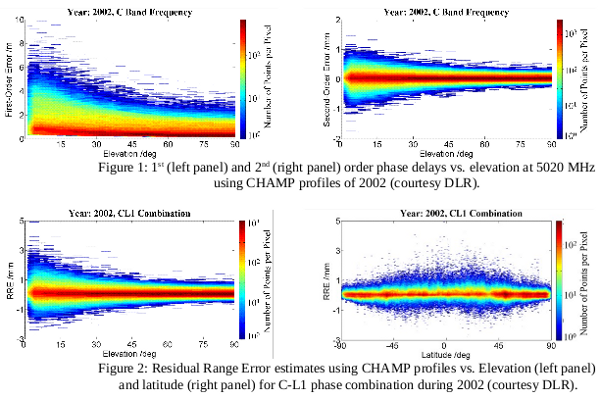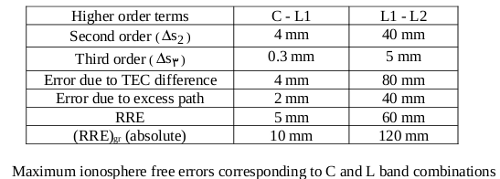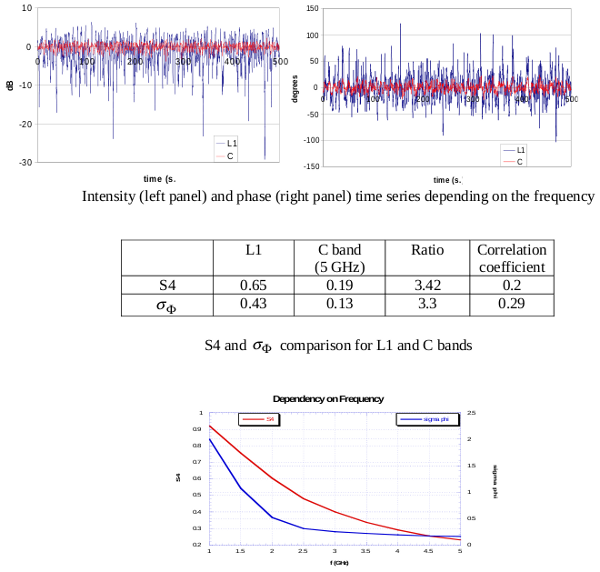Objectives
The SIPIC ESA / ESTEC project objective was to study ionospheric propagation impairments at C band.
The ionospheric propagation errors are the most prominent errors in single frequency GNSS positioning at L-band. Therefore, the elimination of this error is an important task in operational GNSS applications.
The first-order error which may reach a few meters is proportional to the inverse of squared frequency (1/f2) and to the total electron content (TEC) measured along the ray path between GNSS satellite and receiver. Available ionospheric models can be applied for GNSS operation both at L-band as well as at C-band. The most important selection criterion for ionospheric models is their accuracy in computing slant range errors (i.e. TEC) needed for correction in operational positioning. The positioning errors due to scintillations have been studied concurrently.
Ionosphere free solutions
One of the main objectives analysis was the estimation of the first and higher order ionospheric effects at C-Band using different approximations. Bassiri’s and Hajj’s approximation using the NeQuick2 model, as well as a Ray tracing simulations using a large number of CHAMP reconstructed ionosphere profiles and the IGRF, were used to estimate the second and third order delays at 5020 MHz (C-Band). The second and third order residual range errors of the combination of C and L band frequencies have also been estimated.

Although the corrections are developed for the dual-frequency GPS users, they can be used for the combined C-L1 combination as well. However, higher order ionospheric effects at C band are very small and correction may only be needed at low elevations and during ionospheric storm conditions.

The most pragmatic solution would be a service based on dual L band frequencies but using the C band as an aid in order to improve receiver tracking robustness in presence of scintillation/interference. The fact to have a good tracking conditions in C band can enable to use narrower bandwidth on the L band signal, hence improving the tracking robustness in severe scintillation or interference conditions, without being penalised by the receiver dynamic since retrieved from the C band wide bandwidth channel. Such option has also the advantage to be backward compatible.
C Band scintillations
GISM has been upgraded to allow calculating C - band propagation. The convergence of the algorithm has been checked on a number of typical scenarios. In addition, the NeQuick flux limitation to 193 (ITU recommendation) has been removed allowing considering extreme cases for the solar activity.
The scintillations at C band will correspond in most of the cases to weak scintillations even in the case of high solar activities. The GISM S4 peak values obtained are in the range of 0.2. In that case of low fluctuations, analytical calculations can be performed and this has been used to cross check the results obtained with GISM and consequently verify the adequacy of the model. The analytical calculations refer to the Rytov technique.

Project Partners :
 |
 |
 |
